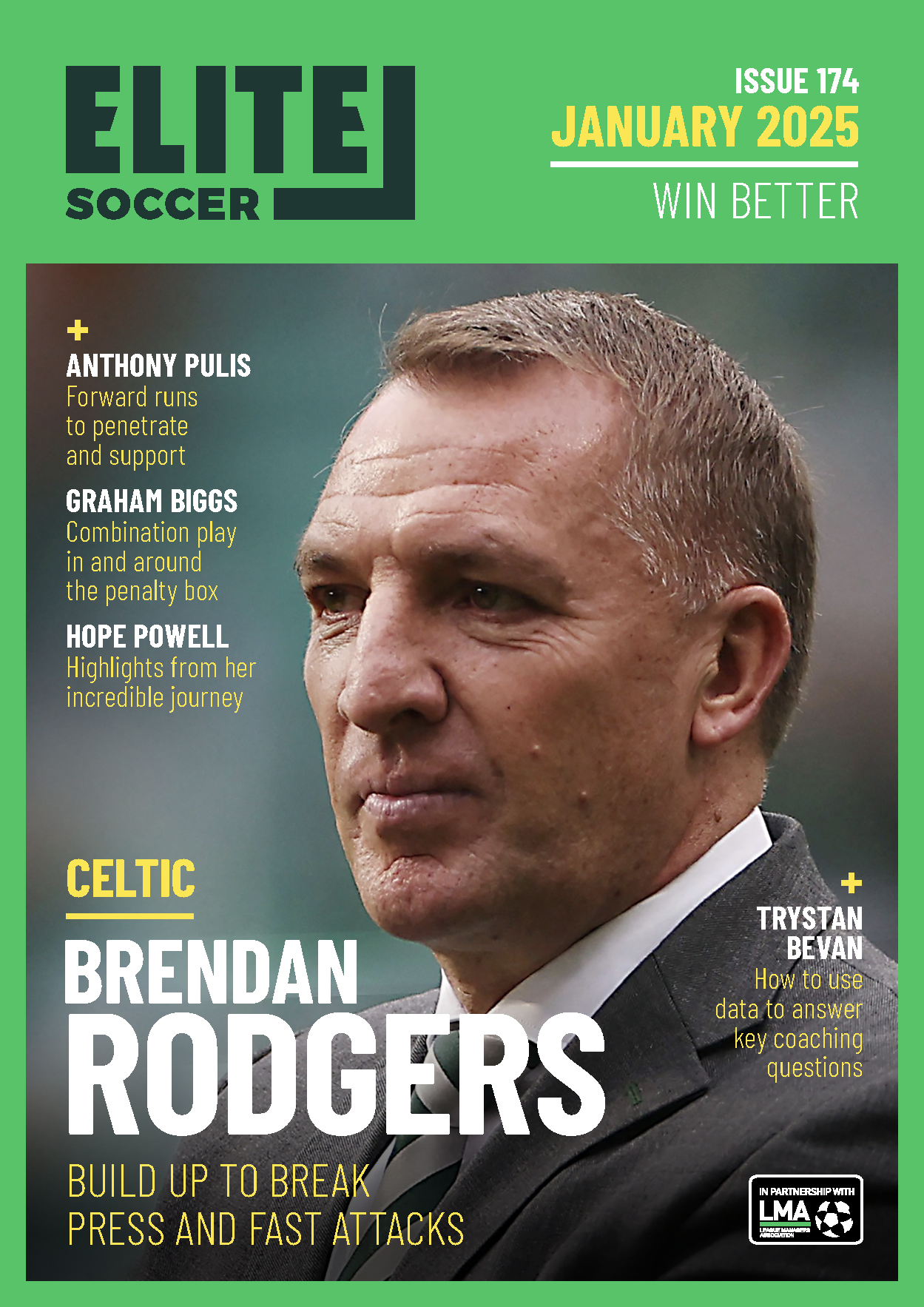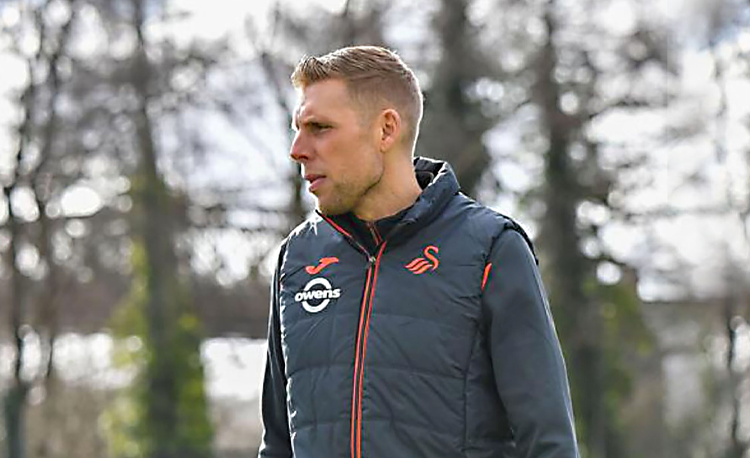You are viewing 1 of your 1 free articles
Possession beyond your opponents’ midfield
This passing drill works on combinations in and through midfield, up to the front player. It relies on good movement, players knowing their duties and responsibilities, and a willingness to adopt key tactical ideas such as third man running.
| Area | Up to a full pitch |
| Equipment | Balls, cones, goals |
| No. of Players | Up to 11v11 |
| Session Time | Passing practice, Box release and Thirds game 20mins each |
Here’s a simple yet devastatingly effective passing drill that works on combinations in and through midfield, up to the front player. It relies on good movement, players knowing their duties and responsibilities, and a willingness to adopt key tactical ideas such as third man running.
At Wolves, our football philosophy revolves around playing an attractive and expansive passing game, and this session has given a great deal of success this season.
What do I get the players to do?
Passing practice
We set up as shown (1) – the first pass is square across the bottom of the area. A first-time pass is then made into the middle to player 3, with the ball being set back for player 1, who passes ahead, where player 2 receives and feeds out diagonally to the other side of the area.
The move then comes back in the other direction.
1
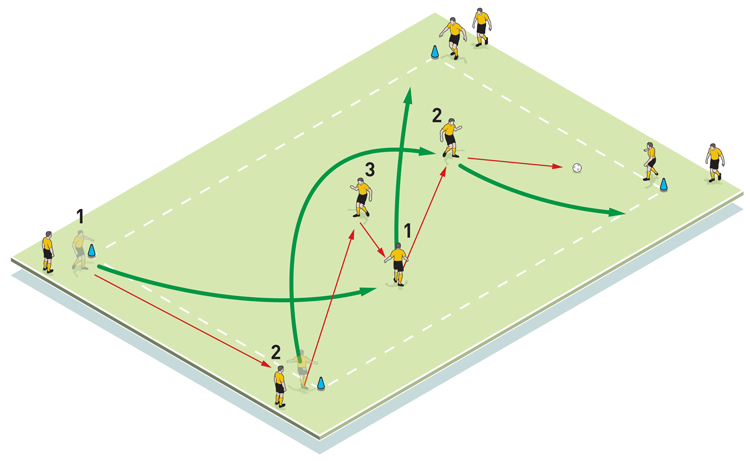
How do I progress the session?
A simple progression is to reduce the size of the playing area. This ensures players must be tighter, quicker and more accurate with their passing.
Box release
Once players have mastered the first set-up we create a new practice on a half pitch (2a). Near the halfway line is a 20x5-yard box – it’s 6v3 in this. Gold players working with the overload must make four to six passes before playing out – if it is intercepted, the ball must be won back and the count restarts.
2a
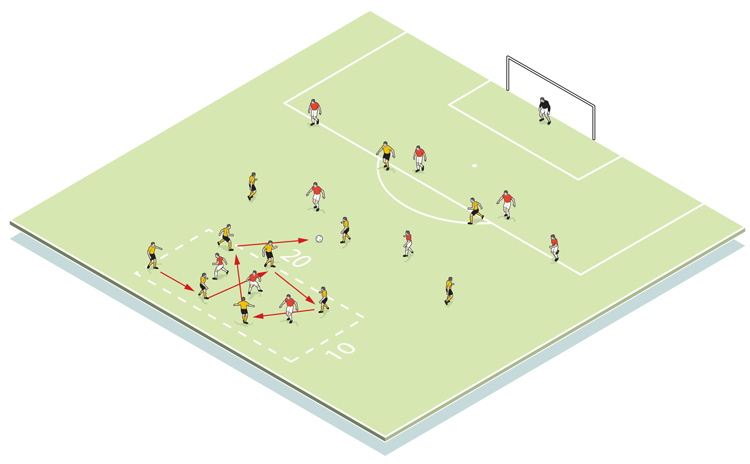
When the ball is released from the box, two gold attackers and one red can also move out (2b). The challenge now is for gold players (who are attacking 7v7) to use the types of passing mechanics practised in the first part to work a way through the red defence in order to test the keeper.
2b

What are the key things to look out for?
Gold attackers must pass and move quickly, and we want to see one midfielder ‘drifting’ behind the midfield line. In addition, one centre-forward should drop in to receive the ball, with the midfielder running past him.
Thirds game
We now set up as shown (3a/3b) playing 11v11. The aim is to play out from the back, with the ball being passed through the thirds and one player from each team moving into the next zone as the ball progresses. We can encourage the ball to go wide into the channels or to keep play narrow, depending on the challenge.
3a
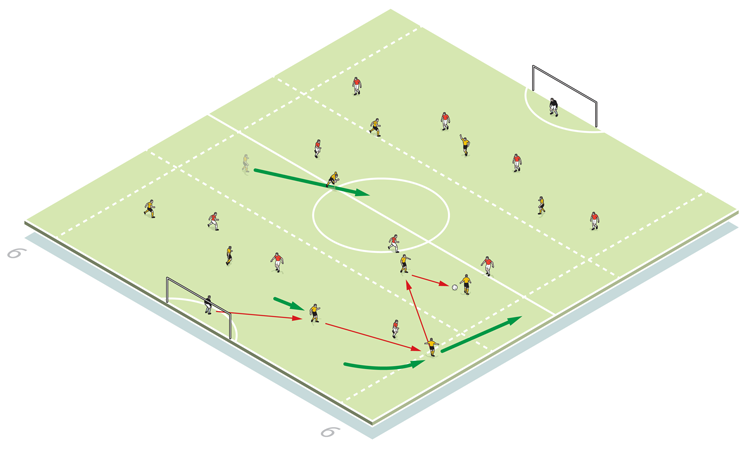
3b
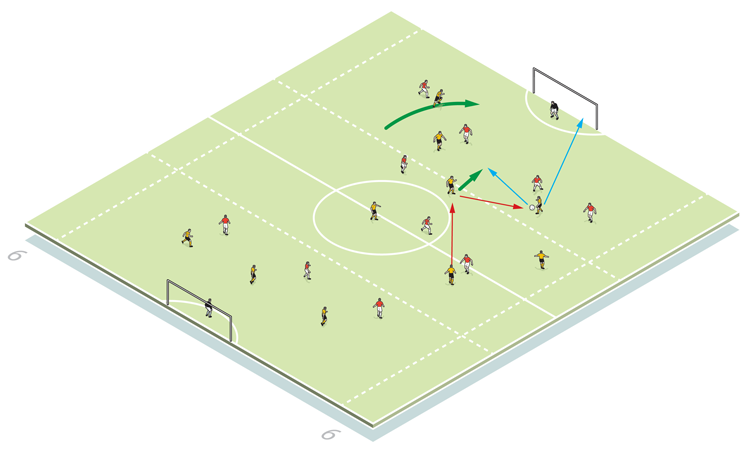
We can progress this by expanding to a full pitch 11v11 game.
What are the key things to look out for technically/tactically?
Midfielders must rotate, trying to receive the ball facing forwards, with a willingness to combine. This means real attention must be paid to movement behind the opposition’s midfield line, with a direct mode of attacking and a willingness to shoot.
Related Files
Editor's Picks
Using the goalkeeper in build-up play
Pressing principles
Intensive boxes drill with goals
Penetrating the final third
Creating and finishing
My philosophy
Pressing initiation
Compact team movement
Defensive organisation
Coaches' Testimonials

Alan Pardew

Arsène Wenger

Brendan Rodgers

Carlos Carvalhal

José Mourinho

Jürgen Klopp

Pep Guardiola

Roy Hodgson

Sir Alex Ferguson

Steven Gerrard
Coaches' Testimonials

Gerald Kearney, Downtown Las Vegas Soccer Club

Paul Butler, Florida, USA

Rick Shields, Springboro, USA

Tony Green, Pierrefonds Titans, Quebec, Canada
Join the world's leading coaches and managers and discover for yourself one of the best kept secrets in coaching. No other training tool on the planet is written or read by the calibre of names you’ll find in Elite Soccer.
In a recent survey 92% of subscribers said Elite Soccer makes them more confident, 89% said it makes them a more effective coach and 91% said it makes them more inspired.
Get Monthly Inspiration
All the latest techniques and approaches
Since 2010 Elite Soccer has given subscribers exclusive insight into the training ground practices of the world’s best coaches. Published in partnership with the League Managers Association we have unparalleled access to the leading lights in the English leagues, as well as a host of international managers.
Elite Soccer exclusively features sessions written by the coaches themselves. There are no observed sessions and no sessions “in the style of”, just first-hand advice delivered direct to you from the coach.



